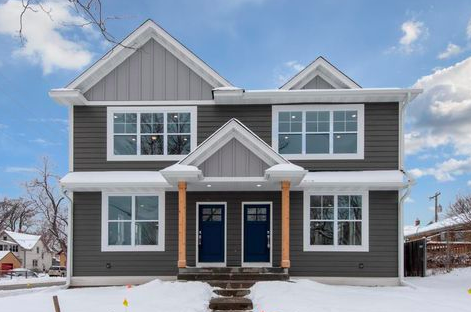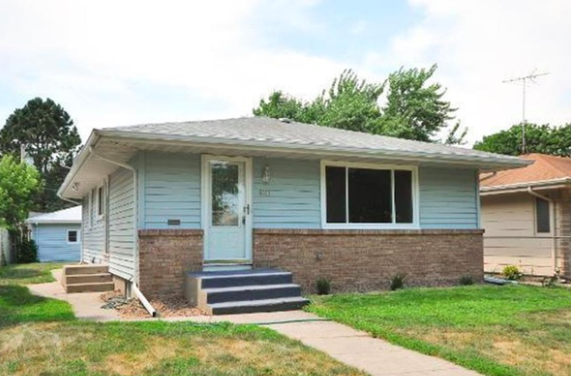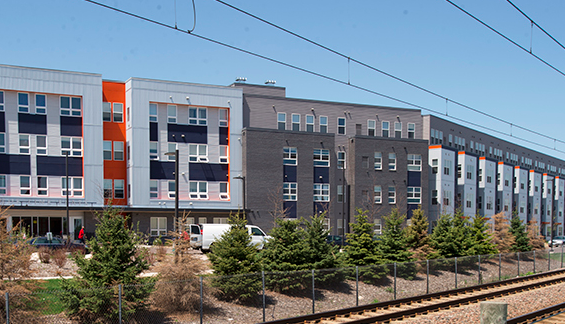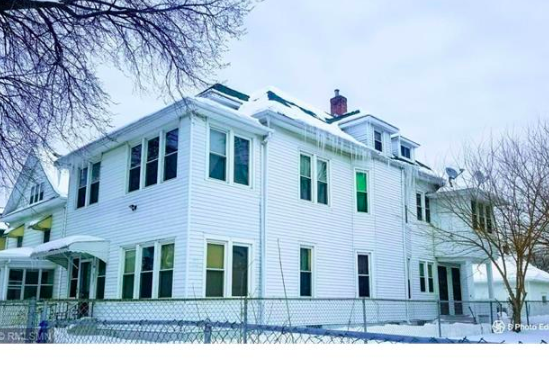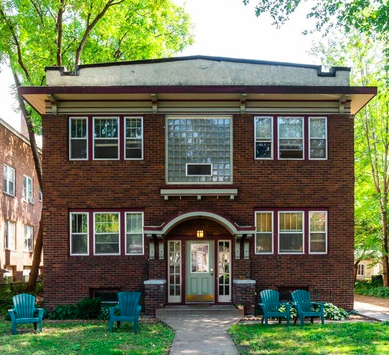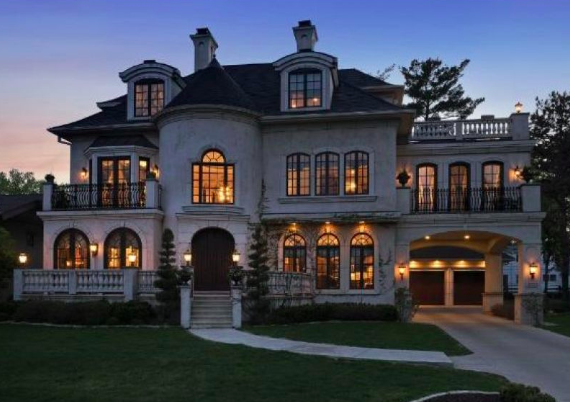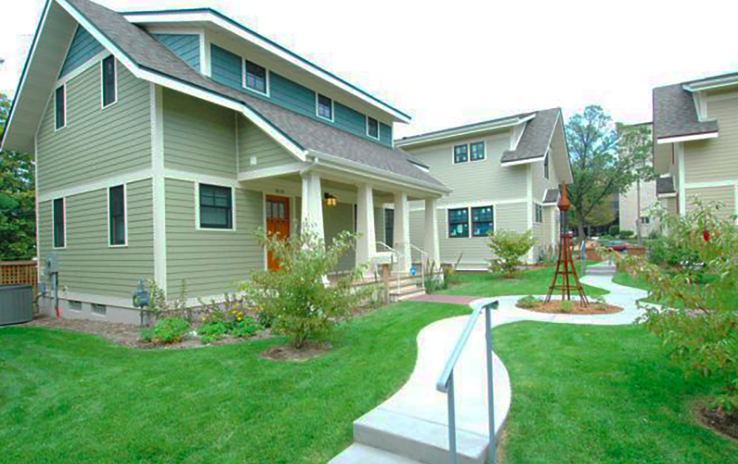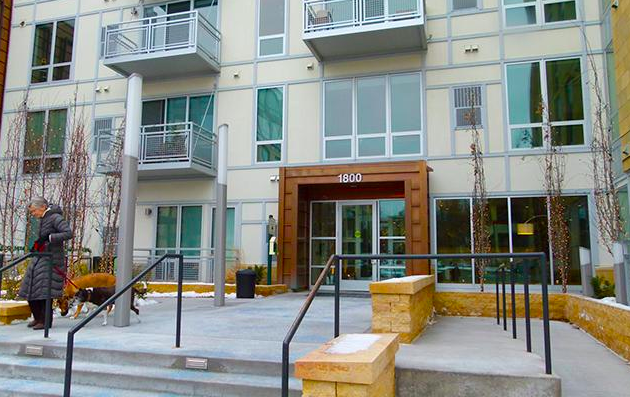Heather Worthington - Minneapolis Long Range Planning
/In a vacuum, civic planning would be easy: No statutes to comply to, no constituencies to hear, no politicians to placate, no history to contend with, no legacy to propose.
Heather Worthington, Director of Long Range Planning for the City of Minneapolis, balances these concerns, and more. In Minneapolis, like in many American cities, “more” includes concerns as broad and timely as environmental and financial sustainability, housing stock, pedestrian mobility, transit, infrastructure, land use, public safety, density, urban design, population health, commerce, parks and open spaces, generational trends, livability, arts and culture, and the aesthetics of place.
Downtown Minneapolis / Photo credit: Dan Anderson, Meet Minneapolis
On this day, Heather arrives to our late afternoon meeting, late in the week, with a smile and her buoyancy in tact. The entanglements and rewards of bureaucracy are part of her everyday reality, and yet, she says, “They haven’t beaten the idealism out of me yet!” This, despite acknowledging that many days in the government realm contain long meetings, strung together through long weeks of meetings, book-ended by additional meetings.
With an eye on long term planning – as opposed to the more “transactional” planning of, say, a specific street’s design or issuing building permits - Heather trades in both prescience and patience as part of Minneapolis’ Community Planning and Economic Development (CPED). She describes her department’s perspective as “the 10,000 foot view of what our city will look like, and trend toward, over the next 20 years.” She is inspired by neighborhood elementary school children, “I think of my favorite 5 year old,” she says. “If we are not going to make good policy decisions for that 5 year old and her future, who are we making them for?”
Heather’s pace as a planner is tempered of the arc of history and demography. She describes her team’s longer term thinking as “research and data-driven work,” that balances the immediacy of a political cycle with the priorities, values and changes within a broad community over time. Citizen engagement, and constant checking-in with elected officials, is a strategy she employs. “How do we engage an entire community in planning the future?” she muses. “We want collective interests to supersede the parochial. We need to know what people need. This community has enormous assets, but they are unequally distributed. Access and agency are key. We ask: ‘How do we give you agency into this planning process, and access to resources that matter?’”
With that deliberateness, Heather finds herself at a crucial point in Minneapolis’ planning trajectory: a moment when history is at the fore of how Minneapolis re-shapes itself as a modern, forward-thinking, equitable place.
As she and her team, along with the Minneapolis City Council and citizens, contemplate the 2040 Comprehensive Plan (in draft form now, awaiting adoption by the Metropolitan Council: https://minneapolis2040.com/), a seismic shift in public awareness of historic injustices based on race is occurring. “Our 7 county metro area has the deepest disparities [between whites and people of color] in the nation,” Heather explains. That reality is at odds with how we define ourselves, and our city. “Our narrative is that we are progressive,” she says, “I want us to be that progressive. I’ve been in local government for 20-some years, and this has been the issue that keeps holding us back: our inability to deal with race, and the biases we have put in place that hurt us.”
Heather points to the entrenched and institutionalized system of racism that shaped Minneapolis residential development for more than a century. Research from Mapping Prejudice (https://www.mappingprejudice.org/about-us/index.html) shows city planners what communities of color have known for decades, that, starting in 1910 in Minneapolis (and cities around the country), “structural barriers stopped many people who were not white from buying property and building wealth.” Those barriers, the Mapping Prejudice report continues, “served as powerful obstacles for people of color seeking safe and affordable housing” and severely limited “access to community resources like parks and schools.”
From Mapping Prejudice, Minneapolis
Legal and widely leveraged, racial covenants (language written into individual deeds disallowing certain groups of people from owning the property) and red lining (a federal banking practice that designated – using red lines on maps - white-only neighborhoods as “good” risks for mortgage lending and neighborhoods with majority people of color as “hazardous” for lending purposes) shaped housing patterns that hold today. “If you overlay those early restrictive covenant and red lining maps with maps where white people and people of color live today, you will see how the patterns have held,” Heather notes. Minneapolis’ 2040 Comprehensive Plan leans toward integrating neighborhoods with housing options that appeal across economic strata (a proxy for race), and is one tool the city can use to “reverse 50 or 60 years of very intentional, explicit policy that supported racial divides.”
Planning for a new kind of city – pulling against the tide of tradition - is difficult work and involves both instruction and appreciative listening on the part of both planners and citizens. Heather does not pull punches when she calls Minneapolis’ early- to mid-20th century practices as “the North’s Jim Crow.” She acknowledges how “baked in” racial segregation was, both to policy and attitudes: “We have to peel back the layers and realize, ‘Oh, yeah, this wasn’t just by accident,” she says.
According to a 2017 Census Bureau analysis, Minneapolis currently has the lowest African-American home ownership rate in the country. Other cities – Seattle, St. Louis, Hartford, Chicago, Louisville, and Portland, to name just a few – are discussing and redressing their own prejudicial practices. For Minneapolis to rectify its racist past we have to, in Heather’s thinking, “spend more time prioritizing and less time planning.”
Policy recommendations in the Minneapolis 2040 Plan lean definitively toward general and attainable priorities: quality of life, economic competitiveness, culturally diverse neighborhoods, aging-in-place, complete streets, energy efficiency, transit options, green space, access to jobs, public art, and population health for all people in Minneapolis. To get there, the Long Range Planning Department has spent the past 2 years engaged in public outreach and listening sessions to convey history more fully across the city and hear what drives both individual fears of change and hope for our city. Heather is comfortable with that process (messy and emotional as it is), knowing the 2040 document will drive policy and shape future generations. “it took us 100 years to get here,” she says, “it might take another 100 to get someplace else. We aren’t done yet. That 5 year old’s success is what will sustain me when I’m 70, so I will sustain the image of that 5 year old now.”
Heather admits her own biases and that she is a work in progress, asserting, “I don’t always get it right. It is a lifetime journey” to seek and internalize a deeper understanding of racial inequality. She admits to practicing “radical compassion”: “By bringing history, race and economics into our community conversations, we can begin to ‘work beyond our own space and empathy’.” She thinks Minneapolis is a generous place and ready for change. She asks each of us to be patient, to appreciate history, to be diligent, and to show up for each other. “That is a level of compassion we could practice,” she says. “When you are on the receiving end of that, that is beautiful. And that isn’t a planning thing, that’s a human thing.”
photo credit: Roy Son
For more information:
http://www.minneapolismn.gov/cped/lrp/WCMS1P-133005
https://www.mappingprejudice.org/index.html
Photo Credits: Tracy Nordstrom, Meet Minneapolis, City of Minneapolis website, Roy Son








